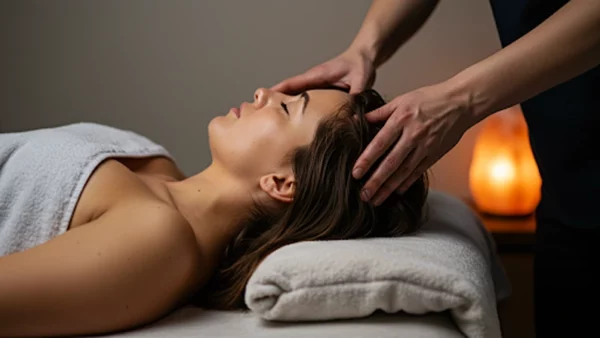If you’ve ever dealt with nagging back pain from long hours at a desk, struggled with a sports injury that won’t heal, or woken up with a stiff neck that makes movement difficult, you’re not alone. Millions of people experience muscular pain and tension every day.
Remedial massage therapy is more than just relaxation—it’s a targeted approach to addressing the root cause of pain and helping your body recover faster. Unlike standard relaxation massage, remedial techniques work to identify and treat the underlying issue, rather than just relieving symptoms temporarily. Whether you’re dealing with chronic tension, sports injuries, or postural issues, a professional remedial massage can help restore movement and ease discomfort.
This guide explores what remedial massage is, the conditions it can treat, the techniques therapists use, and what you should expect during a session. If you’re considering remedial massage or want to understand its benefits, this article provides the insights you need.
What is Remedial Massage?

Definition and Purpose
Remedial massage is a therapeutic technique designed to identify and treat musculoskeletal issues, alleviate pain, and restore function. Unlike relaxation massage, which focuses on stress relief, remedial massage targets specific problem areas using deep tissue work and corrective techniques.
This therapy is widely used for injury rehabilitation, muscle recovery, and chronic pain management. By addressing the root cause of discomfort, remedial massage provides lasting relief and improved mobility.
The History and Development of Remedial Massage in Australia
Remedial massage has been practiced in Australia for decades and is now a recognized part of mainstream healthcare. As more people understand its effectiveness, it has become essential for injury rehabilitation, pain management, and muscle recovery.
Australian remedial massage therapists must undergo rigorous training and accreditation to ensure they provide high-quality care. Many collaborate with physiotherapists, chiropractors, and other healthcare professionals to create tailored treatment plans. Their expertise helps individuals recover from injuries, improve mobility, and enhance overall well-being.
Common Conditions Treated with Remedial Massage

Remedial massage is an effective therapy for a variety of conditions that cause pain and restricted movement. Many individuals seek this treatment to address chronic discomfort, recover from injuries, or correct postural imbalances that develop over time. By targeting specific muscle groups and soft tissues, remedial massage promotes healing, enhances flexibility, and restores proper function.
This form of therapy is particularly beneficial for people suffering from muscle tension, sports injuries, postural misalignment, and conditions like sciatica or tendonitis. By using a combination of deep tissue techniques, trigger point therapy, and myofascial release, remedial massage therapists help relieve discomfort and prevent future issues. Whether you’re an athlete, office worker, or someone experiencing chronic pain, remedial massage provides a tailored approach to improving overall mobility and well-being.
1. Muscle Tension and Chronic Pain
Muscle tightness and chronic pain affect many Australians. According to Pain Australia, one in five people experience chronic pain, impacting daily life and mobility. Remedial massage helps by:
- Releasing muscle knots and tight fascia
- Improving blood circulation for faster healing
- Reducing inflammation and nerve compression
2. Sports Injuries and Recovery
Athletes often use remedial massage for injury management and recovery. It helps by:
- Reducing muscle soreness after intense training
- Improving flexibility and range of motion
- Assisting in the treatment of common injuries like sprains, strains, and tendonitis
3. Postural Problems and Office-Related Pain
Long hours at a desk can cause poor posture, neck stiffness, and lower back pain. Remedial massage can:
- Correct postural imbalances
- Release tension in overworked muscles
- Prevent long-term musculoskeletal issues
How Remedial Massage Works
Deep Tissue Techniques – Deep tissue massage uses firm, slow pressure to target deeper layers of muscles and connective tissue. This technique is effective in breaking down adhesions and scar tissue that can develop due to injury or repetitive strain. By improving blood flow to tight muscles, it helps reduce stiffness and promote faster recovery. Many individuals suffering from chronic pain, limited mobility, or muscle imbalances benefit from this approach, as it restores normal muscle function and reduces discomfort. While deep tissue massage can be intense, it provides long-term relief by addressing the root cause of muscular pain and tension.
Trigger Point Therapy
Trigger points are highly sensitive areas in muscles that can cause pain in different parts of the body, often leading to discomfort and restricted movement. Trigger point therapy focuses on applying sustained pressure to these tight knots to relieve pain and restore normal muscle function. By targeting specific points, this technique helps break pain referral patterns, improve blood flow, and reduce muscle inflammation. Many people with conditions like fibromyalgia, tension headaches, and temporomandibular joint (TMJ) disorders find significant relief from trigger point therapy, as it directly addresses the underlying cause of muscle tension and chronic pain.
Other Common Techniques
- Myofascial Release: Gently stretching the fascia to reduce tension
- Muscle Energy Techniques: Using controlled contractions to improve movement
- Stretching and Mobilisation: Enhancing flexibility and range of motion
What to Expect in a Remedial Massage Session
Before Your Session
- Wear loose, comfortable clothing
- Provide your therapist with a medical history
- Stay hydrated and avoid heavy meals beforehand
During Your Treatment
- Your therapist will assess your condition and tailor the treatment accordingly
- Pressure levels will vary depending on the technique used
- Some discomfort may occur, but your therapist will adjust pressure as needed
After Your Session
- Drink plenty of water to aid recovery
- Expect mild soreness, similar to post-exercise aches
- Follow any recommended stretches or follow-up appointments
Benefits of Regular Remedial Massage

Physical Benefits
Remedial massage helps reduce pain and muscle stiffness by targeting deep layers of muscle tissue and improving circulation. It also enhances flexibility and mobility, making it easier to move freely without discomfort. By promoting better blood flow, the therapy aids in faster recovery from injuries and supports overall musculoskeletal health.
Mental and Emotional Benefits
Beyond physical relief, remedial massage also has a significant impact on mental and emotional well-being. The therapy helps lower stress and anxiety levels, creating a sense of relaxation and balance. Improved sleep quality is another key benefit, as massage can reduce muscle tension and promote a deeper state of rest. With regular sessions, individuals often experience an overall enhancement in their mood and daily mental clarity.
Finding the Right Remedial Massage Therapist
- Look for therapists with qualifications from accredited institutions
- Ask about their experience with specific conditions
- Check client reviews and testimonials
- Verify if treatments are eligible for health fund rebates
Start Your Journey to Pain Relief with Remedial Massage
Remedial massage provides a focused approach to relieving pain, improving mobility, and supporting recovery. By addressing muscle tension and promoting circulation, it helps restore balance and function. Many people seek remedial massage to manage chronic discomfort, recover from injuries, or correct postural imbalances. This therapy also enhances flexibility and reduces inflammation, making movement easier and more comfortable. Book an appointment today to start experiencing these benefits.If you’re ready to ease discomfort and improve mobility, a professional remedial massage therapy session can provide the targeted relief your body needs. Whether you’re recovering from an injury, managing chronic pain, or simply looking to enhance your overall well-being, remedial massage therapy can help restore balance and function.

